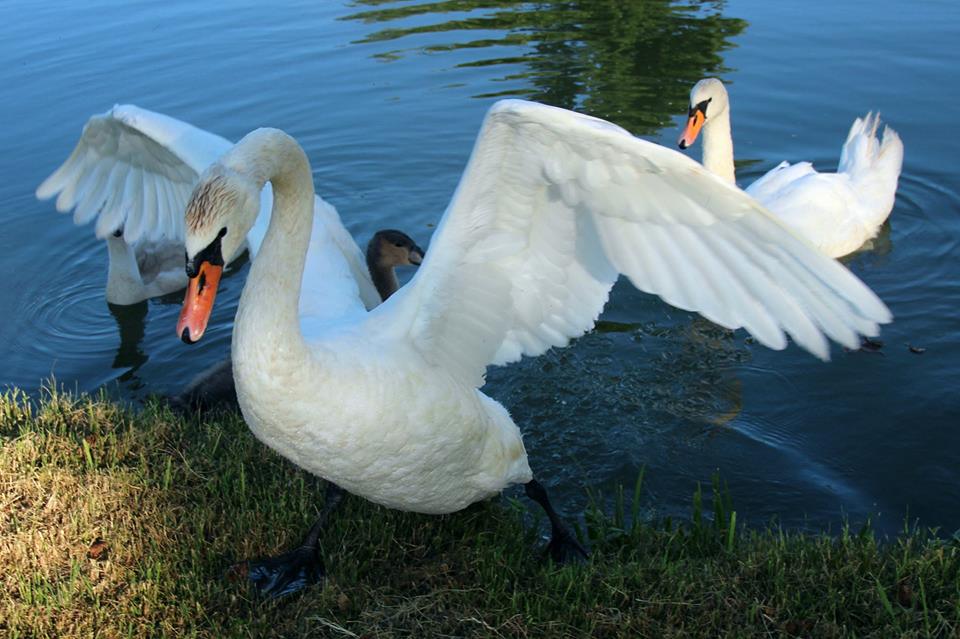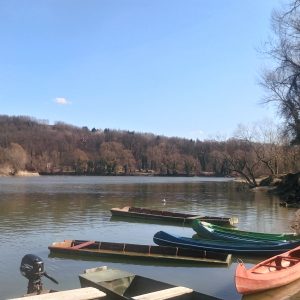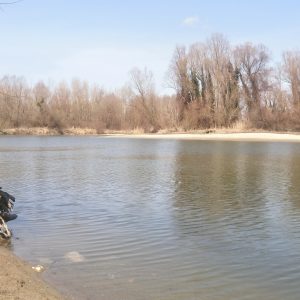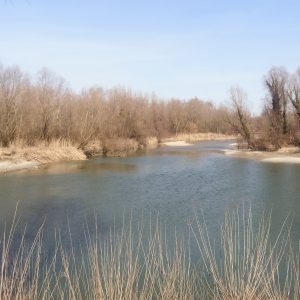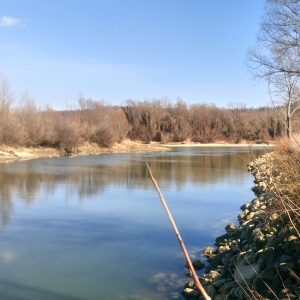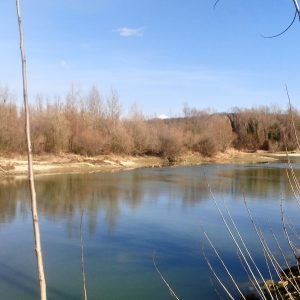The Water Monster – King of the Drava
A tale and a legend from Legrad about a scarce inhabitant of the river Drava.
King of the Drava! – this is how the local people used to call him. Everyone who lived near the river Drava more than a hundred years ago knew who he was. Many saw him on the river banks, the meanders, islands, in the cold waves and eddies. Even the children heard all sorts of tales about him from their earliest childhood: He was large, strong, overgrown with hair from his head to his toes.
He was often seen on the high embankments while the Drava flowed below him; some said that they would see him when they crossed the river by boat from one shore to another, as he plunged into the swirling grey eddies: he’d appear for a moment from his waist up, and then he’d vanish into the water. At every leap he would shout, as if playing:
“Uta-ta-ta! Uta-ta-ta!”
The water would splash all around him.
Men and women used to go down to the Drava marshes to cut twigs for weaving baskets, and they’d stay for two or three weeks. While there, they had many encounters with the Water Monster: while they sat and stripped the barks from the twigs they had gathered that day in the evenings by the open fire, the Water Monster would come and crouch down to get warm; they would all be silent and so would he. He’d warm up and leave. Everyone feared him. They left him alone and he let them be.
When he wanted to lure a woman into his underwater palace he’d turn into a swan.
There was a story about a local girl named Ana who was out one summer gathering twigs with others at the marshes. After supper, she went to rinse her feet and was standing in the water up to her ankles when the Water Monster appeared as a swan and swam up to her legs, around her, came very close… she thought it was a goose and wanted to catch it. But whenever she got ahold of its wing, the goose slipped away… and slowly swam a few steps further. Ana followed it… The swan-goose let her catch it for a moment again, then slipped away as it had before… and step by step, Ana and the swan vanished into the depths of the Drava.
Whenever the stripped twigs and branches were transported by boat and they were in the middle of the Drava tributaries where the current was the fiercest, the people in the boat would see the Water Monster’s fingers gripping the edge of the boat. The boat would tip over sideway, and even capsize. Some of the people would manage to swim away and get home, but others were taken with the Water Monster.
Agneza often told her daughters Mara and Klara that they should stay far from the grip of the Drava and its King. She told them that she had seen him by the water once as a little girl when she took the cows out to pasture. He was crouched by the shore. He turned and beckoned her to join him. Poor Agneza went running home. She also warned them:
“Never go in swimming when the church bells are ringing. Run out of the water as fast as you can. The Water Monster has the greatest power then to drag you down into the depths of the Drava with his cane.”
Ah, it was so lovely on the banks of the little streams that fed the Drava, called the “Little Drava”. Boys would go swimming on one stream, and the girls by another. They stayed separate, and even the little girls broke up into smaller groups, swimming in different places. All those streams flowed into the Big Drava.
Mara and Klara were with the little girls from the houses nearest to theirs: Tilda, Anka, Julka… and two bigger girls who were ten years old, looking after their little sisters. Roza had a little four-year-old sister Katica, and Tereza watched out for her youngest sister Gabrijela.
That Sunday they were joined by a girl from another street, sixteen-year-old Dragica. They chose a stream whoseright bank rose up high above the water. It was a nice place: they each made their own mudslide, rolled in the mud and then squealed “Hurrah!” and slid down, splashing into the water.
“Up and down, down and up”, they shouted and laughed, their merriment echoed far and wide. Suddenly the oldest girl, Dragica, who was staring off into the distance, spoke quickly, frightened:
“Girls, girls, come over here!”
Each of them came rushing over to where Dragica stood. She pointed to a flying bug. It had large transparent wings and a body that was long and slender like a thread, it buzzed up and down, landing on a blade of grass or on the leaf of the bush. This was nothing like the ordinary kind of bug they’d seen in gardens and meadows. All the little girls watched its flight with interest. It spun around them and then lowered again on the slender branch of a bush winding its long tiny body and… as if watching them with its button-eyes.
“What sort of bug is that?” several of them asked.
“What is it called?” Klara wondered, looking at Dragica as if she knew everything.
Dragica was silent for a moment, and then her eyes opened wide and she said the awful word:
“It is the Water Monster, King of the Drava. He has transformed himself into a bug. Someone is going to drown today!”
The words were like a thunderclap. The girls scampered home. Some left their clothes behind and ran back through the underbrush to the village. Mara took Klara by the hand and they ran together, jumping over the high grass and bumpy parts. When she saw Tereza running alone she shouted:
“Where is Gabrijela, your little sister?”
“Please, go back with me and get her”,Tereza pleaded.
Mara’s heart was pounding, but she felt sorry for Tereza and little Gabrijela, so she slowed down, turned around and together with Klara ran back after Tereza.
They got to the mudslides along the shore and looked everywhere for Gabrijela, calling, “Gabrijela! Gabrica-a!…”
“There she is”, shouted Mara, “in the water”!
Tereza leaped down from the riverbank into the water and lifted up the little girl.
All three sat by the water’s edge. Tereza lay Gabrijela stomach side down over her lap so that the water would come out of her mouth. Then she turned her over. The child’s eyes opened.
“Wave her hands around in the air”, Mara said.
She had seen grownups do it before reviving someone they’d pulled from the water. Luckily Gabrijela began to come around.
They were silent all the way home. The terrible scare they’d had, wore them out.
This old story was written by Marija Bango in her collection of children’s stories “King of the Drava”. She was born in Legrad in 1917, where she passed away in 2007. As an eleven-year-old girl she worked as a shepherdess, and her mother “hired her out” in order to contribute to the restricted household budget. When she was hardly fifteen she set out into the great world. She attended night school, the gymnasium curriculum and secondary music school and completed the Music Academy.
Her desire for further knowledge lured her out into the world. In 1951 she went to Paris, and by 1960 she had made it all the way to Montreal, Canada. She was certified as a teacher in Montreal for French and English. For sixteen years she worked as an English teacher in French secondary schools.
She captured her inspiration,memories and experience from around the world in words and music. Her work includes the following:
Children’s stories “Pinklec na panklec” (in English and in Croatian), stories for the young “Večernje pripovijetke” (in French), poem cycles “Po naši poti” (in Kajkavian, Croatian dialect) and “Po belem svetu” (in Kajkavian). The book “Kre Drave” (in Kajkavian) is a collection of children’s games, games for little girls and boys, the way they imitated the big boys and girls, and it also includes various legends and beliefs: bugaboos, revellers, darklings, water babies. She put a number of folk songs from Podravina and Međimurje to music, and performed them herself in Paris, Montreal, Rome and elsewhere; she also wrote “Poetska čežnja”, lyric poems and prose poems in French, English and Croatian, “Psyche”, a study of poetry and prose, a cluster of impressions “Les Beautés de ce Monde” (The Beauties of this World), portraits of characters in prose and other works.
In the twilight of her life, she lived in her hometown Legrad during the spring and summer, while she spent winters in Canada where she systematically worked on her writings. Her prolific life ended in 2007 in Legrad, where she was buried in the local cemetery of the Sacred Trinity Parish.
